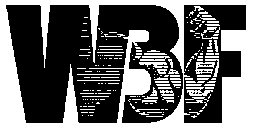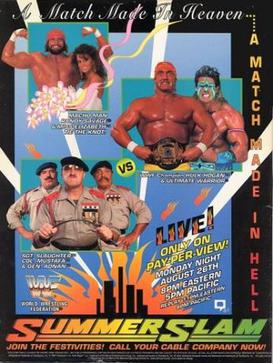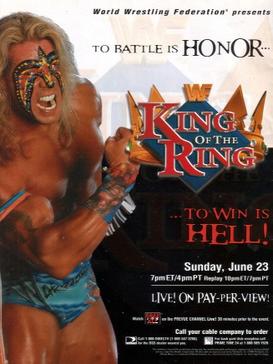
World Wrestling Entertainment (WWE) is an American professional wrestling promotion. It is owned and operated by TKO Group Holdings, a majority-owned subsidiary of Endeavor Group Holdings. A global integrated media and entertainment company, WWE has also branched out into fields outside of wrestling, including film, football, and various other business ventures. The company is additionally involved in licensing its intellectual property to other companies to produce video games and action figures.

Roderick George Toombs, better known as "Rowdy" Roddy Piper, was a Canadian professional wrestler and actor.

Randy Mario Poffo, better known by his ring name "Macho Man" Randy Savage, was an American professional wrestler and professional baseball player, best known for his time in the World Wrestling Federation and World Championship Wrestling (WCW).

Warrior was an American professional wrestler and bodybuilder. Best known by his ring name The Ultimate Warrior, he wrestled for the World Wrestling Federation from 1987 to 1992, as well as a short stint in 1996. He also notably spent a few months in World Championship Wrestling (WCW) in 1998, in which he was known as The Warrior.

WrestleMania IV was the fourth annual WrestleMania professional wrestling pay-per-view (PPV) event produced by the World Wrestling Federation. The event took place on March 27, 1988, at Boardwalk Hall in Atlantic City, New Jersey. The announced attendance of the event was 19,199.

WrestleMania VI was the sixth annual WrestleMania professional wrestling pay-per-view (PPV) event produced by the World Wrestling Federation. It took place on April 1, 1990, at the SkyDome in Toronto, Ontario, Canada, marking the first WrestleMania to be held outside of the United States. The event had an announced attendance of 67,678, a record for the Skydome at the time. The main event of WrestleMania VI was "the Ultimate Challenge" — pitting WWF World Heavyweight Champion Hulk Hogan against WWF Intercontinental Heavyweight Champion the Ultimate Warrior in a Winner Takes All match.

WrestleMania XII was the 12th annual WrestleMania professional wrestling pay-per-view (PPV) event produced by the World Wrestling Federation. It took place on March 31, 1996, at the Arrowhead Pond of Anaheim in Anaheim, California in the United States. Eight matches were held at the event, including two on the Free for All pre-show.
Bruce Prichard is an American professional wrestling executive, booker, and producer and a former manager, commentator, and occasional professional wrestler who works for WWE as Executive Director - CWT. In addition to his corporate roles with WWE, Prichard has also appeared as an on-screen character under the ring name Brother Love. As Brother Love, Prichard was the original manager of The Undertaker, and hosted a talk show segment, The Brother Love Show.

Beyond the Mat is a 1999 American documentary film directed, written, produced and narrated by Barry W. Blaustein. The film focuses on the lives of professional wrestlers outside of the ring, primarily Mick Foley, Terry Funk, and Jake Roberts, as well as some aspiring wrestlers. It focuses on the World Wrestling Federation (WWF), Extreme Championship Wrestling (ECW) during its rise in popularity, and many other independent wrestlers and organizations. The film was originally released in U.S. theaters in March 2000, and later on VHS and DVD.
James Alan Johnston is an American music composer and musician best known for his time with professional wrestling promotion, WWE. Over the course of three decades, he composed and recorded entrance theme music for the promotion's wrestlers, and compilations of his music released by WWE charted highly in several countries.

The World Bodybuilding Federation (WBF) was a bodybuilding organization founded in 1991 by Vince McMahon. It operated as a subsidiary of his company Titan Sports, the owners of the World Wrestling Federation. Tom Platz announced the WBF during the closing ceremonies of the International Federation of BodyBuilding (IFBB) Mr. Olympia competition in September 1990, which he and McMahon had attended as representatives of an accompanying magazine.

Timothy Rhys White was an American professional wrestling referee. He worked with World Wrestling Entertainment as a producer on the SmackDown! brand. During the 1980s and 1990s, White worked as André the Giant's assistant in addition to his referee duties.

Bret "Hit Man" Hart: The Best There Is, The Best There Was, The Best There Ever Will Be also known as The Bret Hart Story: The Best There Is, The Best There Was, The Best There Ever Will Be is a 2005 documentary film released as part of a three-DVD set on November 15, 2005, by World Wrestling Entertainment (WWE). The documentary chronicles the career of popular WWE wrestler Bret Hart. Hart collaborated with WWE to make the documentary, contributing hours of interview content to the film. This collaboration marked the first time Hart had worked in an on camera capacity with WWE since the Montreal Screwjob, which was Hart's last in-ring appearance with the company until his return on January 4, 2010. The documentary chronicles Bret Hart's wrestling career, from how he broke into the business as a member of the Hart family to his run in World Championship Wrestling (WCW).

The 1988 SummerSlam was the inaugural SummerSlam professional wrestling pay-per-view (PPV) event produced by the World Wrestling Federation. It took place on August 29, 1988, at Madison Square Garden in New York City, New York. The pay-per-view was created to help the company compete against rival promotion Jim Crockett Promotions. It was one of the first four annual pay-per-view events produced by the WWF, along with WrestleMania, the Royal Rumble, and Survivor Series, which were eventually dubbed the "big four".

The 1991 SummerSlam was the fourth annual SummerSlam professional wrestling pay-per-view (PPV) event produced by the World Wrestling Federation. It took place on Monday, August 26, 1991, at Madison Square Garden in New York City, New York. Nine matches were contested at the event, including a dark match held before the live broadcast. This was the second event to take place in Madison Square Garden, the first since 1988.

The 1992 SummerSlam was the fifth annual SummerSlam professional wrestling pay-per-view (PPV) event produced by the World Wrestling Federation. It took place on Saturday, August 29, 1992, at Wembley Stadium in London, England and aired on tape delay on Monday, August 31, 1992. It was the first major WWF pay-per-view to take place outside North America.

The 1990 Survivor Series was the fourth annual Survivor Series professional wrestling pay-per-view (PPV) event produced by the World Wrestling Federation. It took place on Thanksgiving Day on November 22, 1990, at the Hartford Civic Center in Hartford, Connecticut. Seven matches were contested at the event, including one dark match before the live broadcast.

The 1996 King of the Ring was the fourth annual King of the Ring professional wrestling pay-per-view (PPV) event produced by the World Wrestling Federation that featured the 10th King of the Ring tournament. The event took place on June 23, 1996, from the MECCA Arena in Milwaukee, Wisconsin.

The Gobbledy Gooker is a professional wrestling turkey mascot originally portrayed by Héctor Guerrero. In the weeks leading up to the 1990 Survivor Series, the World Wrestling Federation hyped its debut by showcasing a large egg at live shows, causing much speculation among wrestling fans. Guerrero was jeered by fans in attendance when he hatched out of the egg and the character was quickly dropped by the promotion.

The 1998 Halloween Havoc was the 10th annual Halloween Havoc professional wrestling pay-per-view (PPV) event produced by World Championship Wrestling (WCW). It took place on October 25, 1998, from the MGM Grand Garden Arena in the Las Vegas suburb of Paradise, Nevada for the third consecutive year. The event is notable for both the Hollywood Hogan vs. The Warrior match, which is considered one of the worst matches of all time, and the Goldberg vs. Diamond Dallas Page match for the WCW World Heavyweight Championship, which is considered one of the greatest WCW matches of all time. In 2014, all of WCW's Halloween Havoc PPVs became available on WWE's streaming service, the WWE Network.


















